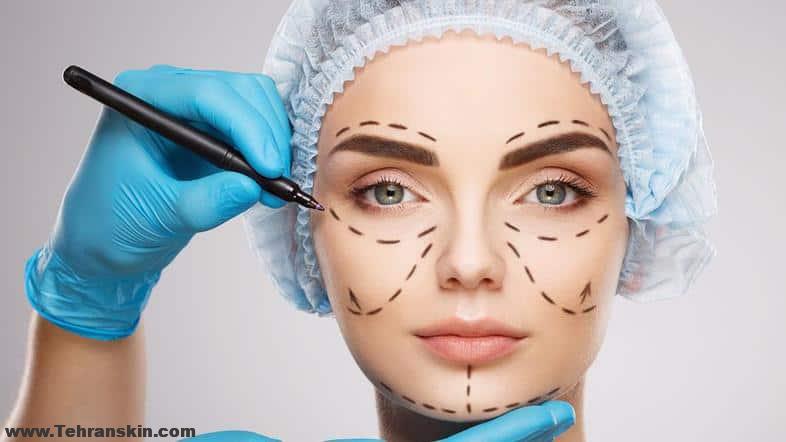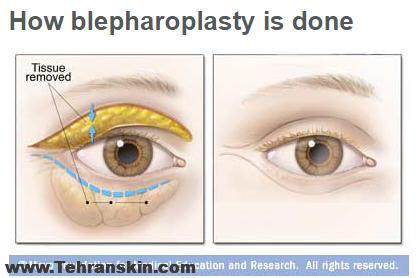
Buttock augmentation, or gluteal augmentation, is used to improve the contour, size and/or shape of the buttocks. This is done through the use of buttock implants, fat grafting or sometimes a combination of the two.
Buttock implants are silicone-filled devices that are surgically placed deep within the tissues of the buttock. Buttock augmentation through the use of fat grafting involves the transfer of fat from one area of the body into the tissues of the buttocks. This technique is sometimes referred to as a Brazilian Butt Lift.
click here to watch Buttock augmentation video
What buttock augmentation surgery can do
- Increase fullness, roundness and projection of your butt or buttocks
- Improve the balance of your figure
- Enhance your self-image and self-confidence
In addition to buttock augmentation procedures, a buttock lift can be accomplished by the surgical removal of soft tissue.
محتوای صفحه
- 0.1
- 0.2 Buttock lift
- 0.3 Who is a good candidate for buttock enhancement?
- 0.4
- 0.5 Who is a good candidate for a buttock lift?
- 1
- 2 How much does buttock enhancement cost?
- 3
- 4 What should I expect during a consultation for buttock enhancement?
- 5
- 6 What are the risks of buttock enhancement?
- 7
- 8 How should I prepare for buttock enhancement?
- 9
- 10 What are the steps of a buttock enhancement procedure?
- 11
- 12 What should I expect during my buttock enhancement recovery?
- 13
- 14 What results should I expect after buttock enhancement?
Buttock lift

A buttock lift, or gluteal lift, improves the shape and tone of the underlying tissue that supports skin and fat in the buttock area.
Aging, sun damage, pregnancy, significant fluctuations in weight and genetic factors may contribute to poor tissue elasticity that can result in sagging of the buttocks.
In order to achieve a smoother and more pleasing contour, excess sagging skin and fat are removed. A traditional gluteal lift will not make a butt larger, but may improve a dimpled, irregular skin surface. This procedure may be included in a body lift or may be performed separately.
What a buttock lift can’t do
Buttock lifts are not intended strictly for the removal of excess fat nor are they intended to add volume to the buttocks. Fat grafting, buttock implants or auto-augmentation (when some of your own tissue is left underneath the skin) can be used to add volume. Liposuction is sometimes added for better contouring.
Who is a good candidate for buttock enhancement?
You may be a good candidate for buttock enhancement if:
- You are physically healthy
- You have realistic expectations
- You are bothered by the feeling that your butt is too small
- You are unhappy with the roundness or general shape of your butt
- Your butt is asymmetrical
Who is a good candidate for a buttock lift?
In general, buttock lift candidates include:
- Individuals with significant soft tissue looseness in the gluteal area
- Healthy individuals without medical conditions that impair healing or increase risk of surgery
- Individuals with a positive outlook and realistic goals for what gluteal lift surgery can accomplish
- Nonsmokers
- Individuals committed to leading a healthy lifestyle with proper nutrition and fitness
How much does buttock enhancement cost?
The average cost of buttock augmentation with fat grafting is $4,341, the average cost of butt implants is $4,750 and the average cost of a buttock lift is $4,802 according to 2018 statistics from the American Society of Plastic Surgeons.
Buttock enhancement costs can widely vary. The average fee referenced above is only part of the total cost – it does not include anesthesia, operating room facilities or other related expenses.
A surgeon’s fee for buttock enhancement will be based on his or her experience, the type of procedure used and the geographic office location.
Most health insurance plans do not cover buttock enhancement or its complications, but many plastic surgeons offer patient financing plans, so be sure to ask.
Buttock enhancement costs may include:
- Surgeon’s fee
- Hospital or surgical facility costs
- Anesthesia fees
- Prescriptions for medication
- Post-surgery garments
- Any special pillows that may be required for your recovery
- Medical tests
When choosing a board-certified plastic surgeon for buttock enhancement, remember that the surgeon’s experience and your comfort with him or her are just as important as the final cost of the surgery.
What should I expect during a consultation for buttock enhancement?
During your buttock augmentation and/or buttock lift consultation be prepared to discuss:
- Your surgical goals
- Medical conditions, drug allergies and previous medical treatments
- Current medications, vitamins, herbal supplements, alcohol, tobacco and drug use
- Previous surgeries
Your plastic surgeon will also:
- Evaluate your general health status and any pre-existing health conditions or risk factors
- Examine and measure your body, this may include detailed body measurements
- Take photographs for your medical records
- Discuss your body lift options
- Recommend a course of treatment
- Discuss likely outcomes of gluteal lift surgery and any risks or potential complications
The success and safety of your buttock enhancement procedure depends on your complete candidness during your consultation. You will be asked a number of questions about your health, desires and lifestyle.
The consultation is also the time to ask your plastic surgeon questions. To help, we have prepared a checklist of questions to ask your buttock enhancement surgeon that you can take with you to your consultation.
It’s very important to understand all aspects of your gluteal lift procedure. It’s natural to feel some anxiety, whether it’s excitement for your anticipated new look or a bit of preoperative stress. Don’t be shy about discussing these feelings with your plastic surgeon.
What are the risks of buttock enhancement?

The decision to have a buttock enhancement procedure is extremely personal. You will have to decide if the benefits will achieve your goals and if the risks and potential complications of buttock augmentation or buttock lift surgery are acceptable.
Your plastic surgeon and/or staff will explain in detail the risks associated with surgery. You will be asked to sign consent forms to ensure that you fully understand the procedure you will undergo and any risks or potential complications.
Buttock enhancement risks include:
- Anesthesia risks
- Bleeding (hematoma)
- Infection
- Poor wound healing
- Fluid accumulation (seroma)
- Numbness or other changes in skin sensation
- Fatty tissue under the skin might die (fat necrosis)
- Pain, which may persist
- Recurrent looseness of skin
- Skin discoloration and/or prolonged swelling
- Asymmetries
- Deep vein thrombosis, cardiac and pulmonary complications
- Possible need for revisionary surgery
- Skin loss
- Sutures may spontaneously surface through the skin, become visible or produce irritation and require removal
- Unfavorable scarring
These risks and others will be fully discussed prior to your consent. It is important that you address all your questions directly with your plastic surgeon.
How should I prepare for buttock enhancement?
In preparing for a buttock augmentation and/or buttock lift, you may be asked to:
- Get a blood test
- Take certain medications or adjust your current medications
- Stop smoking
- Avoid taking aspirin and certain anti-inflammatory drugs as they can increase bleeding
Buttock enhancement surgery may be performed in an accredited office-based surgical facility, ambulatory surgical center or a hospital.
If your procedure is performed on an outpatient basis, be sure to arrange for someone to drive you to and from surgery and to stay with you for at least the first night following surgery.
What are the steps of a buttock enhancement procedure?

Buttock augmentation can be achieved through either the use of implants or through transferring your existing fat, or sometimes a combination of both. Your surgeon may choose between a variety of incision patterns and techniques.
The appropriate technique for you will be determined based on:
- Butt size and shape
- The amount of fat you have on your body that is available for use through liposuction
- Your goals and activity level
- Skin quality and elasticity as well as the amount of extra skin
Buttock implant procedure
Step 1 – Anesthesia
Medications are administered for your comfort during the surgical procedure. The choices include intravenous sedation and general anesthesia. Your doctor will recommend the best choice for you.
Step 2 – The incision
An incision will be made. The incision can be made toward the top of both sides of the upper buttocks, toward the bottom in both of the gluteal creases (the areas where your “cheeks” meet the top of the thighs), incisions between both cheeks (hidden in the crease) or with one incision placed down the center of the sacrum, or the crease between the buttocks. The length of the incision and scar is directly related to the affected areas.
Step 3 – Implant placement
A silicone implant specially made for the buttocks is inserted either in the muscle or above the gluteal muscle on each side.
The method for inserting and positioning implants depends on the type of implant, degree of enlargement desired, your body type and your surgeon’s recommendations.
Step 4 – Closing the incisions
Incisions are closed with layered sutures in the buttocks tissue and with sutures, skin adhesive or surgical tape to close the skin.
Step 5 – See the results
The results of buttock augmentation are immediately visible. Over time, post-surgical swelling will resolve and incision lines will fade. Satisfaction with your new image should continue to grow as you recover and realize the fulfillment of your goal for a fuller butt. Results of this surgery are permanent.
Fat grafting / Brazilian butt lift procedure
Step 1 – Anesthesia
Medications are administered for your comfort during the surgical procedure. The choices include intravenous sedation and general anesthesia. Your doctor will recommend the best choice for you.
Step 2 – Liposuction
Liposuction is performed through small, inconspicuous incisions. First, diluted local anesthesia is administered to reduce bleeding and trauma. Then a thin hollow tube, or cannula, is inserted through the incisions to loosen excess fat using a controlled back and forth motion. The dislodged fat is then suctioned out of the body using a surgical vacuum or syringe attached to the cannula. In general, your surgeon may liposuction up to three times the amount of fat than what will actually be injected into the buttocks.
Step 3 – Fat injection
The fat, tissue and blood that were removed through liposuction are then processed. The syringes are then connected to a special cannula. Your surgeon will use this cannula to add the fat to the buttocks through small injections all over your behind.
Step 4 – See the results
The results of buttock augmentation are immediately visible; however, you will not see your final results until a year after the surgery, as it takes a while for the fat to “take.” This procedure offers natural-looking and -feeling results, but the projection of the buttocks may decrease over time. Some of the initial volume you experience after your fat grafting procedure will fade as the fat is absorbed by your body (on the average patients will retain 60-80% of the transferred fat, in some cases more in others less). Satisfaction with your new image should continue to grow as you recover and realize the fulfillment of your goal for a fuller butt. As you gain or lose weight, your results may change as the transferred fat can grow or shrink just as any other fat in your body.
Buttock lift procedures
Buttock lift procedures are surgical procedures and they may require extensive incisions. Incision length and pattern depend on the amount and location of excess skin to be removed, as well as surgical judgment. Advanced techniques usually allow incisions to be placed in strategic locations where they can be hidden by most types of clothing and swimsuits.
Step 1 – Anesthesia
Medications are administered for your comfort during the surgical procedure. The choices include intravenous sedation and general anesthesia. Your doctor will recommend the best choice for you.
Step 2 – The incision
One common technique of gluteal lift uses an incision just below the waist line and is commonly combined with an abdominoplasty incision in a body contouring procedure. Liposuction may be used for improved contouring as well. If it is determined by your surgeon that you are a good candidate for an auto-augmentation, some of the tissue that is normally removed is strategically left in place hidden underneath the remaining skin.
Another technique uses an incision just below the buttocks and is placed in the crease between the buttocks and the upper thigh. The excess skin and tissues are removed resulting in a more defined crease and sometimes smooths the skin of the back of the upper leg.
Step 3 – Closing the incisions
Deep sutures within underlying tissues help to form and support the newly shaped contours. Sutures, skin adhesives, tapes or clips may be used to close the skin incisions.
Step 4 – See the results
The results of a gluteal lift are visible almost immediately. However, the tissues will need to settle within the first 3-6 months and the incision lines can take up to two years to mature. Get more information on gluteal lift results.
What should I expect during my buttock enhancement recovery?
After your buttock enhancement procedure, dressings/bandages will be applied to the incisions. Small, thin tubes may be temporarily placed under the skin to drain any excess blood or fluid that may collect. You will be taken into a recovery area to be closely monitored, and may be permitted to go home after a few hours.
You will be instructed to wear a support garment around-the-clock following your surgery. Your surgeon will tell you how long you need to wear the garment and if there are any other garments that you may have to wear during your recovery.
You will be given specific instructions that may include:
- How to care for your surgical site(s) following surgery
- Medications to apply or take orally to aid healing
- Specific concerns to look for at the surgical site or in your general health
- How to care for your drains
- When to follow up with your plastic surgeon
Be sure to ask your plastic surgeon specific questions about what you can expect during your individual recovery period:
- Where will I be taken after my surgery is complete?
- What medication will I be given or prescribed after surgery?
- Will I have dressings/bandages after surgery? When will they be removed?
- When can I bathe after surgery and how may I bathe?
- Are stitches removed? When?
- When will the drains be removed?
- When can I resume normal activity, driving and exercise?
- When do I return for follow-up care?
Buttock augmentation with fat grafting
You will be asked to avoid prolonged sitting for about two weeks (some surgeons prefer longer). This is very important because prolonged sitting will damage the fat.
You will also be encouraged to sleep face down or on your side. When you do have to sit, you will have to use a pillow or cushion placed behind the legs (hamstring muscles) to help raise the buttocks, avoiding pressure onto the fat grafts.
Your surgeon may encourage you to seek a lymphatic massage from a licensed massage therapist. You can generally resume exercise after six to eight weeks.
Buttock enhancement recovery at home
If you experience shortness of breath, chest pains or unusual heart beats, seek medical attention immediately. Should any of these complications occur, you may require hospitalization and additional treatment.
What results should I expect after buttock enhancement?
The results of buttock augmentation and/or buttock lift surgery are visible almost immediately. However, it will take some time for the final results of the procedure to fully develop. Satisfaction with your new image should continue to grow as you recover from surgery.
The tissues will settle a little within the first 3-6 months and the scarring can take up to two years to fade to its mature level. Some visible scars will remain, but the overall results are long-lasting, provided that you maintain a stable weight and general fitness. As your body ages, it is natural to lose some firmness. However, most of your initial improvement should remain.
Although good results are expected from your buttock enhancement surgery, there is no guarantee. In some situations, it may not be possible to achieve optimal results with a single surgical procedure and another surgery may be necessary.
Following your physician’s instructions is essential to the success of your surgery. It is important that the surgical incisions are not subjected to excessive force, motion, swelling or abrasion during the time of healing. Your doctor will give you specific instructions on how to care for yourself.
If your procedure was performed with fat transfer, it can take up to a year to see your final results. Some of the fat that leads to the initial shape after surgery will be reabsorbed by your body.
The results of your buttock augmentation surgery will be long-lasting. Over time, your butt’s size and shape can continue to change due to aging and gravity. You’ll be able to retain your new look longer if you maintain your weight and keep a healthy lifestyle.
If your surgery was performed with fat transfer, it is important to keep in mind that this fat can behave like any other fat in your body. If you gain weight, the fat in your buttocks may grow. If you lose weight, you may lose some of the volume in the buttocks as the fat shrinks.
for more information about buttock augmentation surgery Please Click Here…



